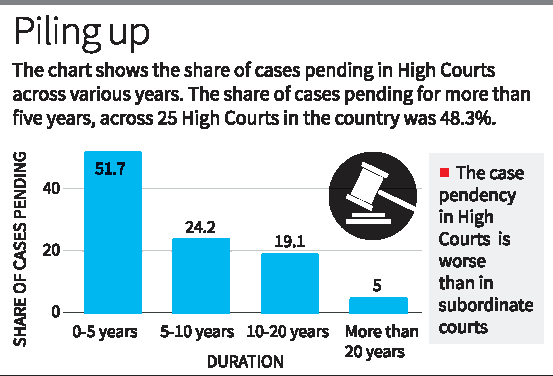Free Courses Sale ends Soon, Get It Now


Free Courses Sale ends Soon, Get It Now



Copyright infringement not intended
Context: According to the India Justice Report, judicial vacancies remain high, and cases grow in number.
India Justice Report 2022
About
Parameters
Highlights of the Report
Shortage of Judges
Increasing Pendency
Case Clearance Rate (CCR)
Court Halls
Performance of States

Keywords
Subordinate courts
Must Read Articles:
Vacancies in High Courts: https://www.iasgyan.in/daily-current-affairs/vacancies-in-high-courts
Pendency in High Courts: https://www.iasgyan.in/daily-current-affairs/pendency-in-higher-courts
Pendency of Court Cases in India: https://www.iasgyan.in/rstv/pendency-of-court-cases-in-india
|
PRACTICE QUESTION Q. In light of the Recently released India Justice Report 2022, discuss the possible reasons behind the increasing pendency of cases at all levels of the Judiciary. Also, suggest innovative steps to reduce the pendency and ensure speedy justice and an efficient Judicial system for the Common man. |
https://epaper.thehindu.com/ccidist-ws/th/th_delhi/issues/31319/OPS/GOPB2RUSM.1+GNAB2SL0T.1.html
© 2024 iasgyan. All right reserved